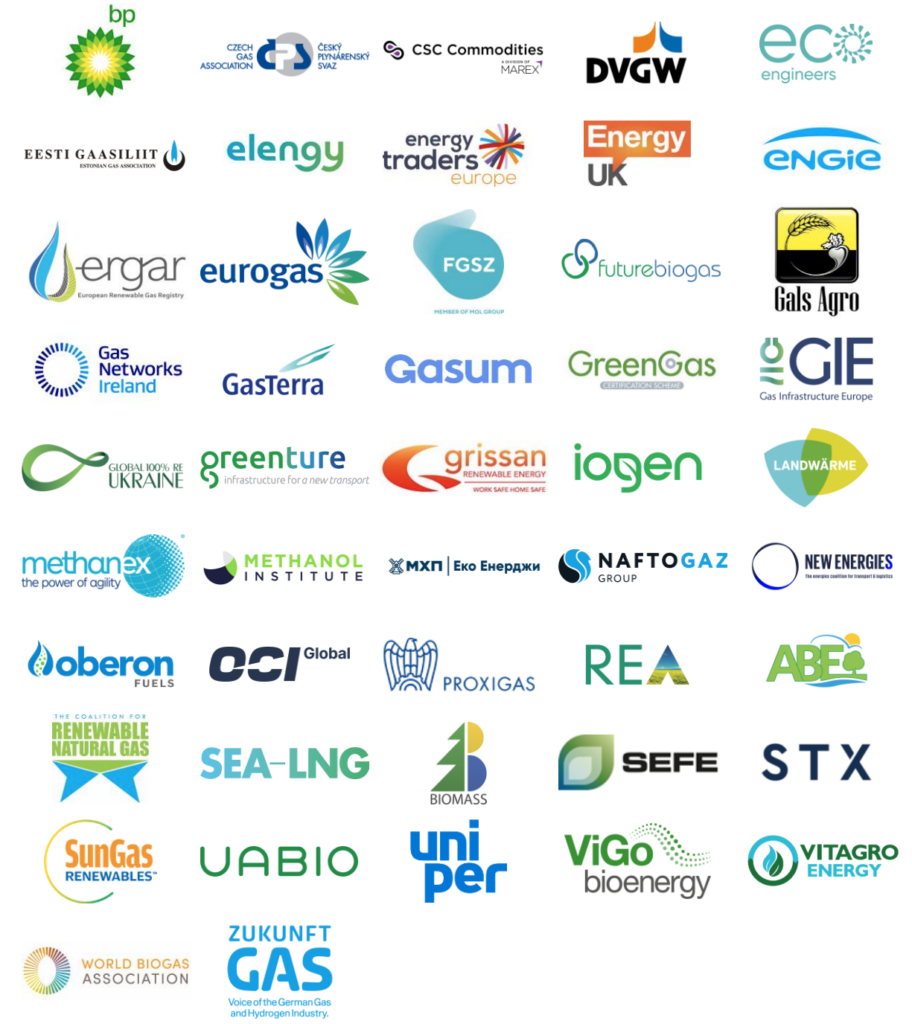Renewable and Low-Carbon Gases
We are all Gases
Eurogas represents all gases and their derivatives. Besides natural gas, Eurogas advocates for the scaleup and investment in renewable and low-carbon gases alongside CCUS technologies, which will have a significant and increasing role to play in Europe’s energy mix because of their effective contribution to the sector’s decarbonisation.
What are Renewable Gases?
Renewable gases are gases from renewable feedstocks: examples are biogas, biomethane, renewable hydrogen, e-methane (renewable synthetic methane) and renewable ammonia.
Renewable gases offer a sustainable alternative energy source and can play a crucial role in decarbonising various sectors of the economy, including power generation, transportation, industry, and heating. In addition to reducing greenhouse gas emissions, they also contribute to improved air quality by avoiding net additions of greenhouse gases into the atmosphere, and enhance energy security as they can be produced locally in Europe.
Types of Renewable Gases and their Derivatives
Sustainable biomethane
Sustainable biomethane is produced from waste and residues. Overall, even when releasing GHG emissions during their uses, biogas and biomethane can allow net GHG emissions reduction by decreasing emissions otherwise entering the atmosphere or that have been captured during the growth of their feedstock.
Renewable hydrogen is produced by the electrolysis of water using renewable electricity. This is considered renewable because the energy used to create renewable hydrogen is electricity coming from renewable sources like solar panels, wind turbines or biological sources of energy. It can be used as a clean fuel for transportation, heating, industrial processes, and energy storage.
Synthetic natural gas is a gas produced through the gasification of a carbon source, including biological, or by combining CO2 with hydrogen via the Sabatier reaction. It has similar properties to methane and can be used for all natural gas application without adaptation e.g. for heating, electricity generation, and as a transportation fuel. Depending on the energy source, it can reduce GHG emissions.
Ammonia can be produced by combining nitrogen (the largest component of the ambient air we breathe) with hydrogen. If the hydrogen is from renewable origin it allows for producing renewable ammonia. Ammonia can be used as a carbonfree fuel for transportation, energy storage, and as a feedstock for the production of fertilizers and chemicals.
Methanol is a key product in the chemical industry mainly used for producing other chemicals. Renewable methanol can be produced using renewable energy and feedstocks coming either from biomass or CO2 captured from renewable sources.
Low-carbon gases can be produced by low-carbon yet non-renewable electricity (e.g. nuclear) or from processes relying on natural gas and carbon capture. To qualify as low-carbon, a gas needs to meet a GHG emissions reduction threshold of 70% compared to fossil reference.
Globally, low-carbon hydrogen is likely to represent a major source of hydrogen supply and demand especially in the transition toward net zero. The IEA, in its World Energy Outlook 2023, considers that hydrogen from fossil fuels with CCUS – a subset of low-carbon hydrogen vs. EU definitions as it does not include electrolysis based hydrogen from low-carbon electricity – will represent around 26-32% of the hydrogen produced in the world in 2030 and 21-27% of the hydrogen produced in the world in 2050 across the various scenarios, from Stated Policies and Announced Pledges to Net Zero Emissions by 2050.
Eurogas believes that low-carbon hydrogen will represent an important part of the EU hydrogen mix and will have a crucial role in the development of the hydrogen market and infrastructure, providing the volumes necessary to materialize the overall and renewable hydrogen ambitions of Europe as stated in the REPowerEU. Low carbon hydrogen and its derivatives can deliver GHG savings, and as for all renewable and low carbon energy, these GHG credentials should be the main benchmark when determining their value in a net zero future.
On the path to net-zero, we need to make use of all viable, sustainable solutions for the end-uses that they can be effective in. Because of the obvious relationship between natural and renewable and low-carbon gases, Eurogas advocates for their usage wherever they can lead to emissions reductions, in order to achieve our goal of carbon neutrality by 2050.


